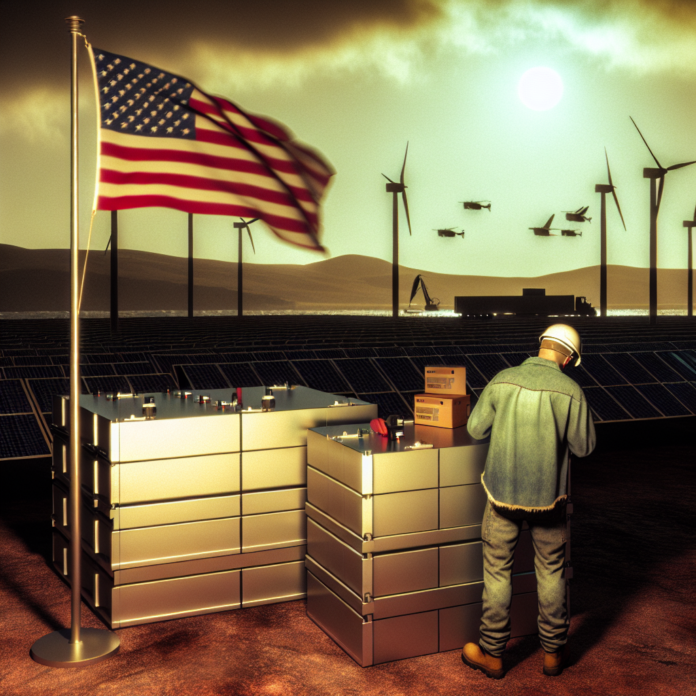Trump’s Tariffs on Chinese Battery Storage: What It Means for the U.S. Energy Sector
Introduction: A New Front in the U.S.-China Trade Conflict
Former President Donald Trump has returned to the spotlight with a bold promise: to reimpose tariffs on Chinese battery storage systems. Announced as part of his 2024 campaign strategy, this move has sparked widespread debate across the political, environmental, and economic spectrum. As momentum builds toward the 2024 election, these proposed tariffs could significantly reshape the energy landscape in the United States and beyond.
This article delves into the potential impact of Trump’s proposed tariffs on Chinese-made battery storage products, examining the implications for the renewable energy market, U.S. manufacturing, consumer prices, and global climate goals.
The Rise of Chinese Battery Dominance
Why China Leads in Battery Storage
China has become the global leader in battery storage technology, accounting for over 75% of global lithium-ion battery production. Chinese companies such as CATL and BYD have dominated the market due to economies of scale, low labor costs, and government subsidies.
These batteries are crucial components not only in electric vehicles (EVs) but also in renewable energy storage projects, allowing solar and wind-generated power to be stored for later use, effectively reducing reliance on fossil fuels.
Impact on U.S. Clean Energy Goals
The U.S. has accelerated efforts to transition to clean energy, and affordable battery storage is key to making this happen. President Biden’s Inflation Reduction Act (IRA) includes major incentives for clean energy investments. However, the bulk of storage systems continue to be imported from China due to their cost-effectiveness and availability.
Trump’s Tariff Proposal: An Overview
What Trump Plans to Do
As part of his “America First” trade policy revival, Trump has proposed a 60% tariff on Chinese goods, with a specific emphasis on electric batteries and storage systems. This echoes his earlier trade conflicts with China during his first administration, where aggressive tariffs were used with the stated goal of bolstering U.S. manufacturing.
According to Trump’s campaign, the goal is not just economic — it’s also political. He claims the tariffs will shield U.S. manufacturers from “unfair competition” and secure domestic energy independence.
Industry Response and Pushback
Industry leaders, including renewable energy firms and utility companies, have expressed concern that the proposed tariffs could significantly raise production and installation costs. This might hinder the growth of clean energy initiatives and delay critical climate targets.
Jigar Shah of the Department of Energy’s Loan Programs Office has noted that “shocks to the battery supply chain could impact everything from grid stability to EV affordability.”
Potential Economic Impacts of the Tariffs
Cost Increases for Energy Projects
The most immediate effect of tariffs would be higher costs for battery storage systems. Industry analysts estimate that tariffs could result in a 30–50% increase in battery prices, depending on the tariff structure and global commodity trends.
For renewable energy developers, this could mean scaled-back projects, longer payback periods, and delayed returns on investment. Small- and medium-sized solar providers, in particular, would struggle to remain competitive.
Implications for U.S. Manufacturing
While the tariffs aim to encourage domestic battery production, experts are skeptical about the short-term benefits. The U.S. currently lacks the manufacturing capacity to quickly replace China’s role in the supply chain. Building new battery gigafactories requires time, investment, and skilled labor.
On the other hand, if tariffs create sustained market demand, they may stimulate long-term domestic innovation and investment — but at the risk of immediate setbacks to clean energy momentum.
Job Market Effects
Rising battery costs could have ripple effects through the clean energy job market. With projects delayed or downsized, employment in solar and wind sectors may stagnate. This would contradict both Trump and Biden’s stated goals of boosting green job creation in the U.S.
Geopolitical and Environmental Implications
Global Climate Goals at Stake
Battery storage is essential to achieving the emissions targets outlined in the Paris Agreement. Disrupting the supply of affordable battery solutions could set back not just U.S. efforts, but global climate initiatives. Given that the U.S. and China are the two largest carbon emitters, cooperation — not conflict — may be pivotal.
Risks of Further Trade Retaliation
China may respond to the proposed tariffs with countermeasures, leading to another round of trade wars that could hurt multiple industries. The ongoing tension could also discourage international companies from investing in the U.S. renewable market, seeing it as unstable or too politically charged.
What Should the U.S. Do? Strategic Recommendations
Strengthen Domestic Capabilities Without Halting Progress
Instead of abrupt tariffs, experts suggest a phased approach that includes:
- Investing in domestic battery manufacturing through subsidies and public-private partnerships.
- Implementing strategic sourcing policies to reduce overdependence on any single nation.
- Creating incentives for companies that adopt or develop alternatives to Chinese-made batteries.
Encourage Innovation Through R&D
Funding university research and startups focused on battery alternatives — such as solid-state technologies and recycled materials — could position the U.S. as a leader in next-gen storage tech.
Work With Allies to Diversify the Supply Chain
Building coalitions with countries like South Korea, Japan, and EU nations could help develop a more resilient global supply chain, reducing reliance on China while avoiding direct confrontation.
Conclusion: A Delicate Balance Between Protectionism and Progress
Trump’s proposed tariffs on Chinese battery storage products represent a high-stakes intersection of trade policy, technological innovation, and environmental urgency. While aimed at protecting American economic interests, the move could threaten the accelerating clean energy transition and compromise climate goals in the short term.
The U.S. faces a complex challenge: how to encourage domestic manufacturing without dismantling the progress already made in renewable energy deployment. Carefully crafted policy — rather than sweeping punitive measures — may offer the most sustainable path forward.
As the 2024 election looms, this debate is far from over. But one thing is clear: the decisions made today will shape the future of clean energy for decades to come.


